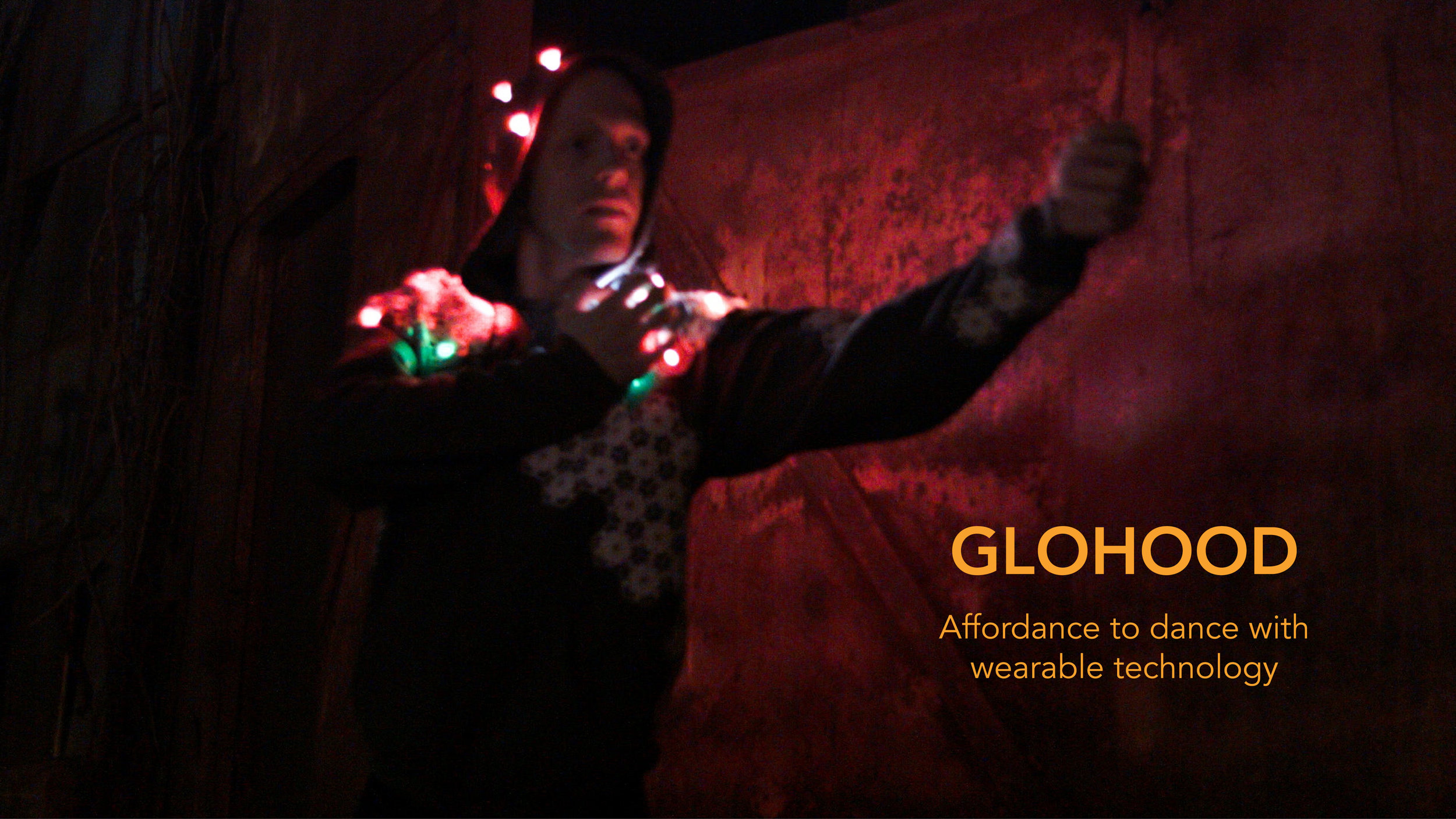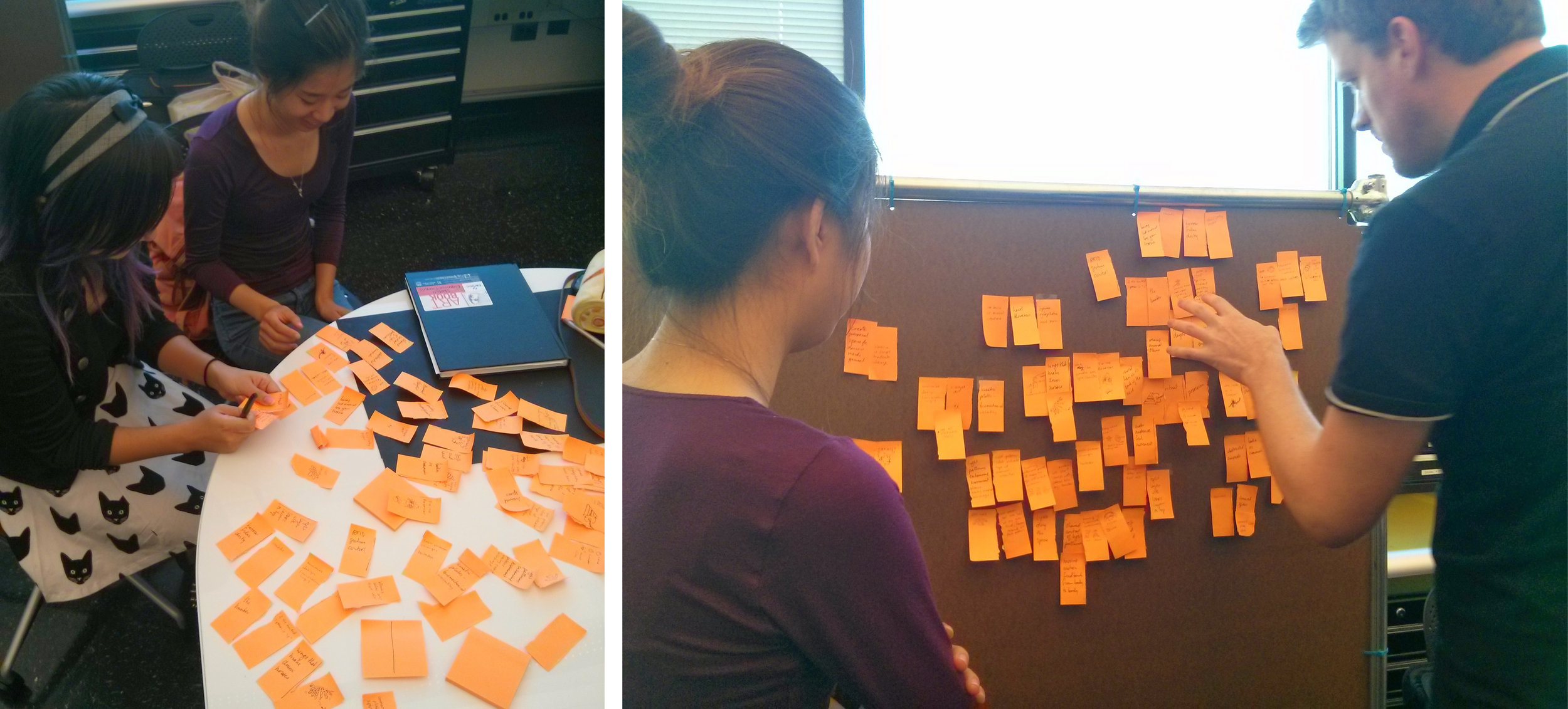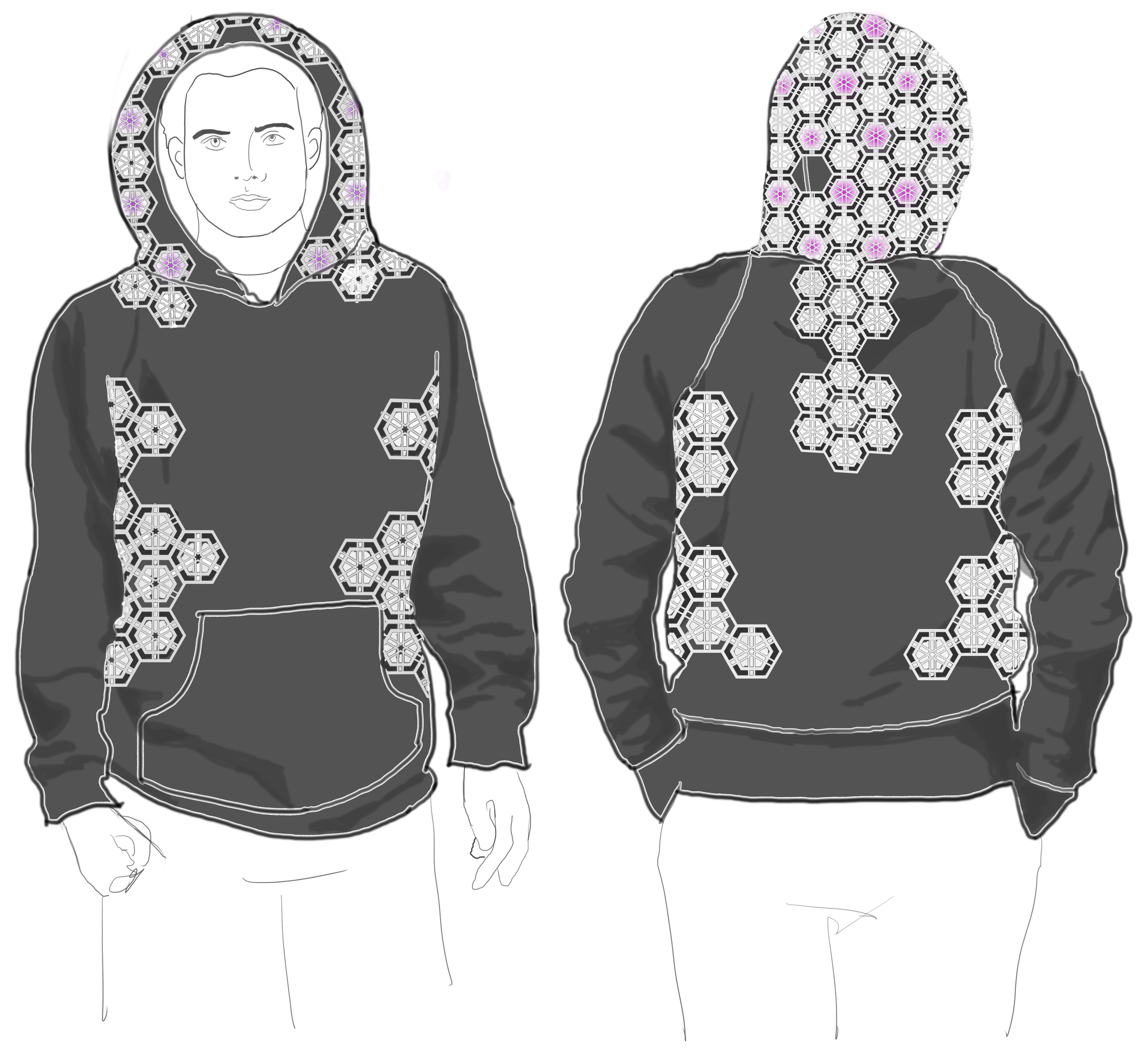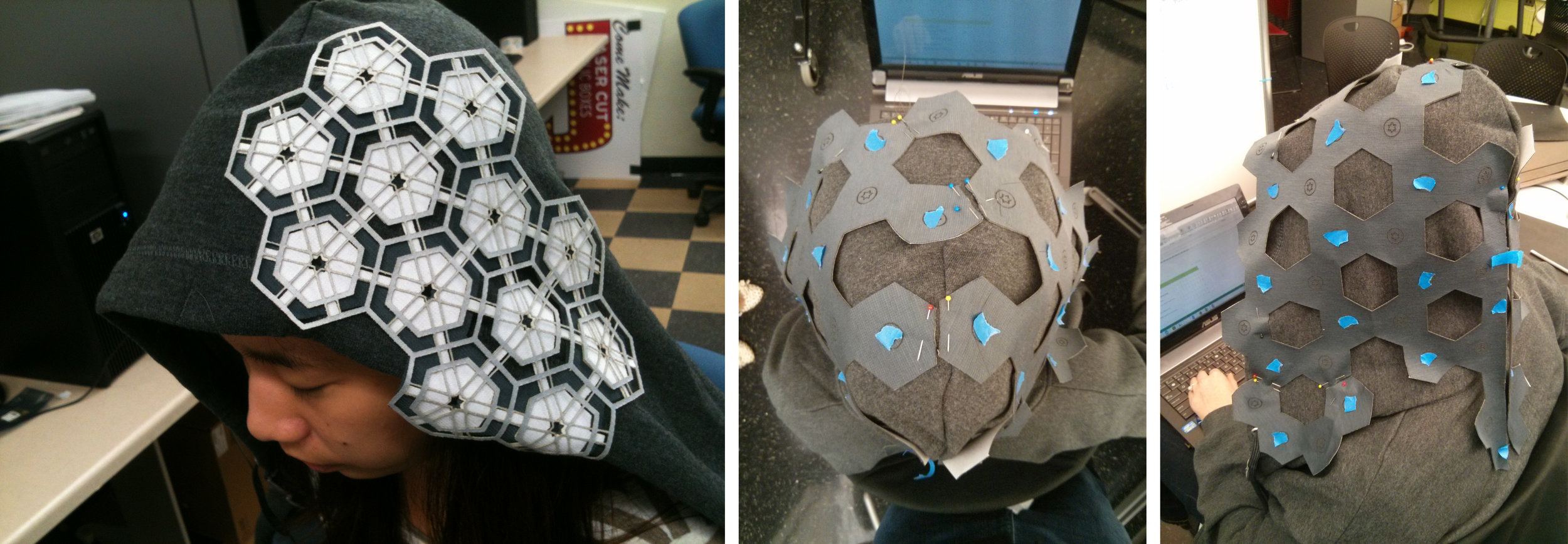WITH: James Hallam & Erica Yang
RESPONSIBILITIES: Prior research, user research, analysis, ideation, prototyping, user testing
USER RESEARCH: INTERVIEW
We partnered with gloATL and worked specifically with the troupe’s Sean Hilton to tailor a solution. gloATL is a heralded collaborative contemporary dance troupe based in Atlanta, Georgia.
MINDMAPPING
We wanted to give the gloATL dancers new tools to better communicate with the audience, with each other, and with themselves.
Key concepts:
To Audience
• Heatmap of lights on the body
• Generated audioTo Other Dancers
• Smell
• RFID controlTo Self
• Restricted movement
• Haptic feedback
MINDMAP MOODBOARD
We took our ideas from the mindmapping session and synthesized them into a moodboard for visual reference.
PRIOR RESEARCH
In order to gain some insight and inspiration, the team researched previous works related to augmenting performance, as well as related design elements. We focused on technology that the dancer could wear on his body, which could provide:
1) Haptic feedback for the dancer
2) Visual, auditory, and olfactory feedback for the audience and other dancers
IDEATION
With our research fresh in our minds, the team started sketching various concepts for possible interactions the dancer could have using the garment.
RFID MOTION CONTROL
While brainstorming, the team was drawn to the use of an RFID reader that could be placed on the hand or anywhere else on the body, coupled with RFID tags. The tags could be sewn into Sean’s garment, or even multiple dancers’ garments.
Passing the RFID reader over the tags could trigger:
Light patterns
Sounds
Mode changes
LED HEAT MAP
Another idea that we liked was an LED matrix sewn into the garment, with a diffusion surface as the top layer.
The colors in the matrix could:
Map dancer’s movements across their body
Map interactions with other dancers
Signal internal indicators
USER RESEARCH: AFFORDANCE MAPPING
The team engaged in a co-design process with the dancer to explore the positioning of sensors and actuators on the body. In order to do so, we built a purely functional adjustable band, capable of being placed anywhere on the body.
The band included a(n):
Arduino microcontroller
RFID reader
Piezo buzzer
Haptic vibrator
RGB LED
Battery pack
The eight accompanying RFID tags could be attached anywhere onto the body as well.
USER TESTING
The team met with Sean to let him explore with the band, and give us his feedback.
Key Findings:
Sean liked to put the tags in harder to reach spots, and along his side
The reader reached more tags when it was placed on the inside of the wrist
The reader was not sensitive enough, and made Sean work too hard to get a result
IDEATION: SECOND ITERATION
We built our next set of ideas off of the RFID exploration session with Sean. The hoodie that Sean happened to be wearing at the time actually turned out to be a great form for both embedding electronics and making him comfortable to explore.
FINAL CONCEPT
The team synthesized our earlier ideas into the final concept by:
Incorporating the heat map concept with a grid of LEDs to translate dance movement into light patterns
Adding an accelerometer on the back to give live motion feedback to the lights
Adding an RFID reader to the inside of the wrist, as well as a haptic vibrator to give feedback so the dancer would know when a tag was read
Hiding RFID tags in Sean’s preferred spots along the body that would interrupt the patterns fed by the accelerometer, with a different pre-programmed pattern that was unique to each tag
To add visual interest to the LED grid, even when the lights were off, we fashioned it into an intricate geometric pattern that was easily manipulable for contouring around the body.
PROTOTYPING
Once we had our plan, the team got to work with building our full functional prototype. Through trial and error, we found appropriate fabric that would sufficiently diffuse the lights, and was easy to work with.
We used the fabric grid to map out where the individual LEDs would go on the base garment.
The bus lines were digitally mapped out before we started the sewing process.
The LEDs, accelerometer, microcontroller, and their power bus lines were hand sewn into the grid, as well as a pouch to hold the battery. The RFID reader and haptic vibrator were attached to the inside of the garment’s wrist.
FINAL ASSEMBLY
Then the grid was ready to be attached to the hood and surface diffusion layer.
SHOWCASE VIDEO
Finally, we met with Sean once more to adjust the fit and fine-tune the performance of gloHood before a live demo at Atlanta’s Goat Farm Arts Center.
CONCLUSION
The largest issue we ran into was the innate instability of sewn electronics, which are much more prone to shorting and other hardware problems; it interfered with some of gloHood’s functionality during movement. However, Sean was able to incorporate these unexpected moments into his dance, and still enjoyed exploring the new toolkit gloHood offered him.
FUTURE STEPS
The team should work on stabilizing the electronics so that they perform consistently. We would also need to expand the RFID network, either with more full garments or just more tags to be placed on the other dancers’ bodies, for increased interaction and exploration.























